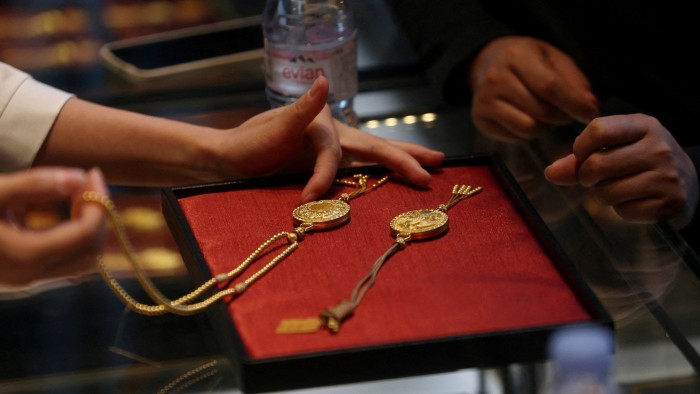Unlock the Editor’s Digest for free
Roula Khalaf, Editor of the FT, selects her favourite stories in this weekly newsletter.
Chinese consumers have been increasingly turning to local brands across a wide range of industries. In sectors such as sportswear, beauty and electric vehicles, local names have surged ahead, driven by rising national pride and improving product quality. Yet amid this shift towards homegrown products, luxury jewellery remained a category resistant to change. For decades, European brands such as Cartier and Van Cleef & Arpels have held an unyielding grip on the Chinese market.
That dominance is beginning to erode. Driving this shift is local rival Laopu Gold, a once-traditional jeweller now leading a transformation in China’s high-end jewellery sector. Laopu reinvented itself by embracing Chinese designs, making 24-carat gold pieces adorned with culturally significant symbols such as dragons and phoenixes. These designs, rooted in heritage, have been popular among a new generation of affluent young locals seeking luxury that reflects their identity.
Fixed pricing, exclusive product releases and a loyal fan base have helped give the company a unique position, winning market share as global peers struggle to localise fast enough to compete. Same-store sales at its flagship locations have more than doubled this year, while online sales have risen fourfold, reflecting continued sales momentum.
That position is reflected in its share price. Since its listing last year, shares of Laopu Gold have risen more than 14-fold, pushing its market value past HK$170bn ($21.7bn), surpassing Chow Tai Fook, long the dominant name in China’s jewellery market. It is now one of the fastest-growing luxury groups in Asia.

Yet Laopu remains heavily dependent on the domestic market, with growth closely linked to Chinese consumer sentiment and the investment appeal of gold. Unlike global luxury rivals such as Hermès or Richemont, it has yet to prove it can maintain premium pricing during economic downturns. It also lacks an international presence and diversification across product categories. While its revenue has been growing rapidly, more than doubling last year, it remains a fraction of the turnover of legacy groups such as Richemont or Chow Tai Fook.
Despite these limitations, Laopu’s rise nevertheless marks an inflection point. China was already the most important buyer of luxury; now it is transitioning to become a credible supplier too. To join the ranks of global luxury groups, it will need to demonstrate resilience across market cycles and build a brand identity outside of local markets. But even now, Laopu shows progress that once seemed far beyond China’s reach.
